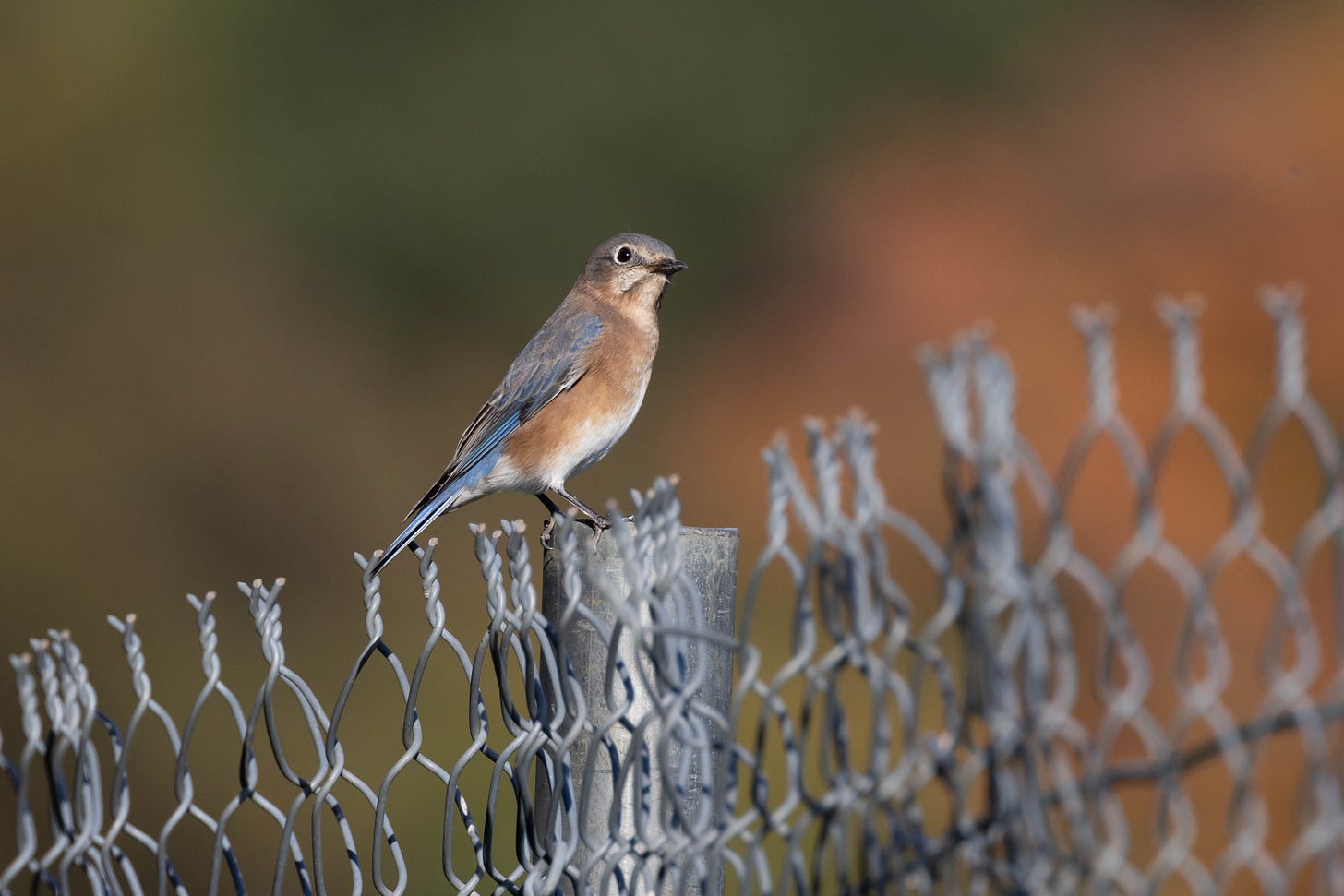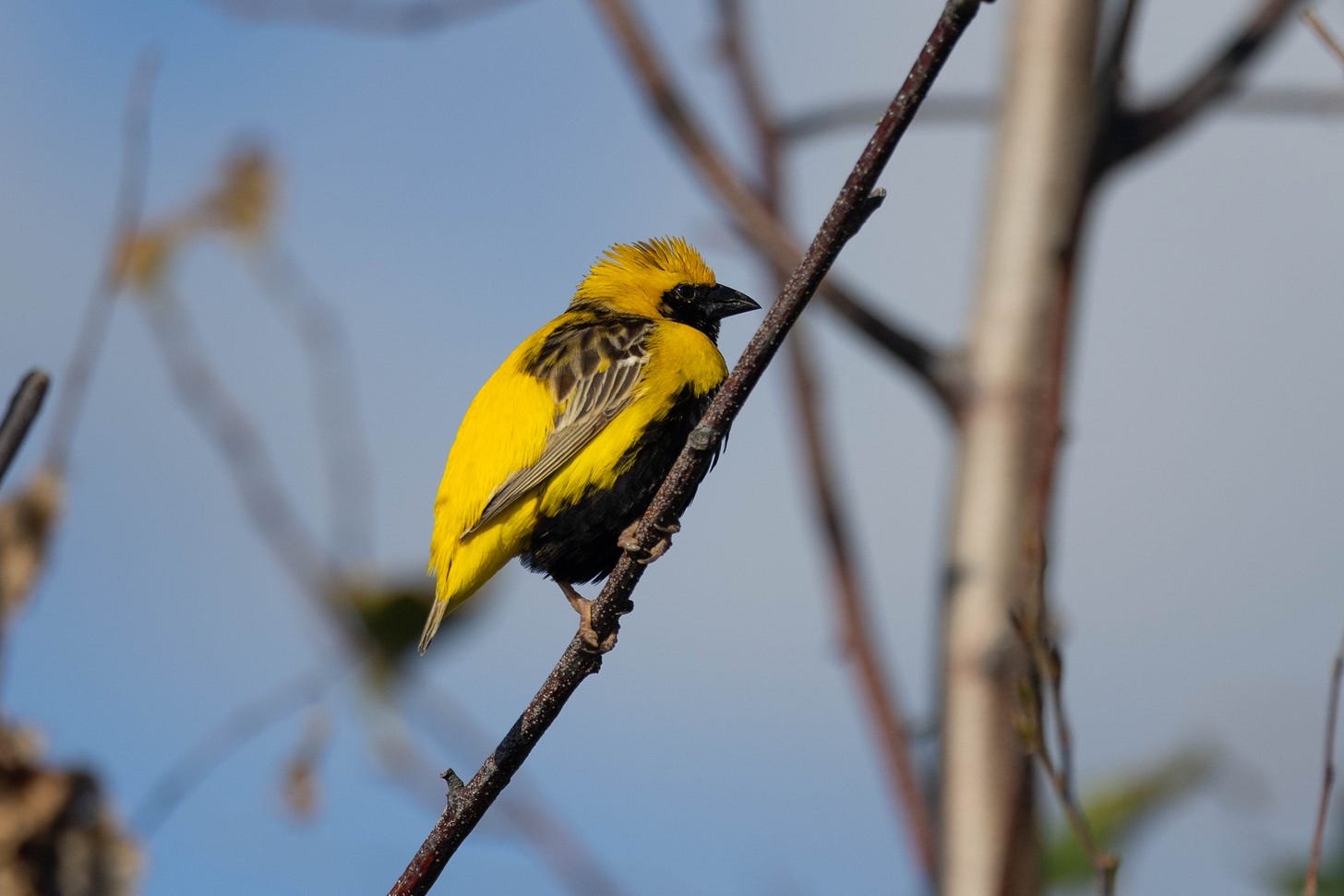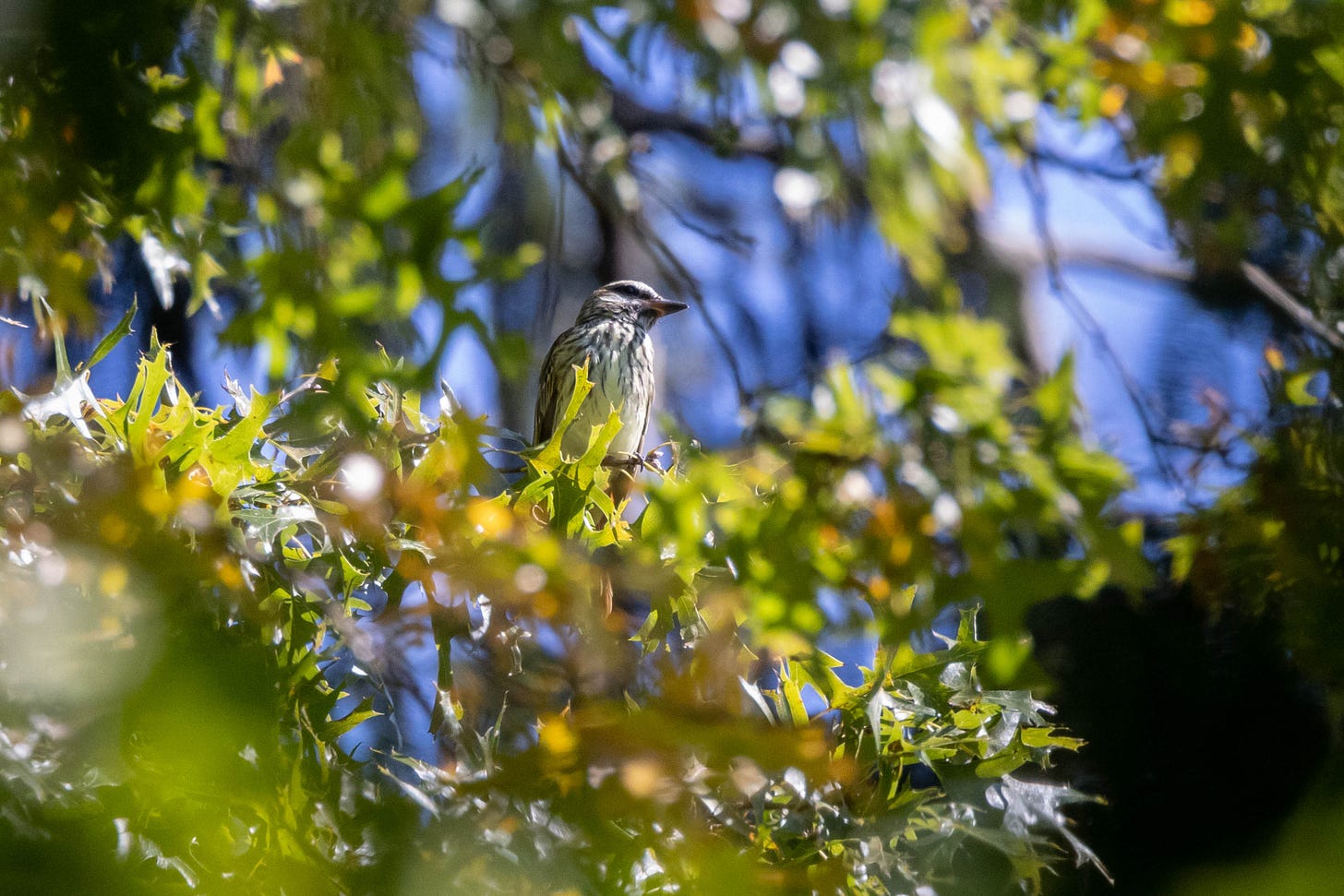back in late winter of 1970, the new york state assembly put a bill up to a vote: to declare the eastern bluebird as new york’s state bird. the vote was nearly unanimously in favor, with one dissenter, bronx democrat seymour posner. but why? “those of us who are city dwellers don't know the bluebird,” he said, according to the new york times. “we know the sparrow, we know pigeons very well. how are we going to go along with a bird we never saw?”
he was an astute observer - at that time, there were few, if any bluebirds in nyc. and as a young kid on long island, i also noticed that our state bird, the only state symbol that i knew, didn’t seem to exist. if you take a look at this abundance map animation from ebird, you’ll see that the data backs my and posner’s observations up. but things weren’t always that way. and these days, you can increasingly encounter our state bird in the state’s largest city if you know when and where to look.

i think most of you know this, but bluebirds are not blue jays. blue jays, which i wrote about last time, are loud, intelligent corvids with crests who hang out in forests and use their big beaks to eat acorns. bluebirds are sparrow-sized thrushes, the same family as robins, who hang around wide open areas and eat fruits and bugs. bluebird habitat was once mainly open woods with regular fires and little undergrowth. today, you’re still likely to find them there, but also golf courses, orchards, farmland, and open rural areas, where they breed in cavities in old trees or nest boxes. they’re common in certain spots on long island and throughout much of upstate new york.
bluebirds didn’t always avoid nyc, because nyc didn’t always look the way it does today. these birds were abundant migratory visitors, frequent breeding birds, and occasional winter residents until the mid-20th century. before then, the city had farmland in the outer boroughs that could support them. but during the 1950s, rapid development, competition with introduced starlings and house sparrows, and probably also the widespread pesticide use led to a drop in city dwellers’ bluebird encounters, according to urban ornithology. by the early 1970s, bluebirds were completely gone from the city.
the bluebird’s decline was part of a broader trend, and seen as a national catastrophe. in his 1977 national geographic article, biochemist lawrence zeleny wrote that the bird was “so scarce that most people under 30 have never seen one.” he mounted a campaign that became the north american bluebird society, offering resources on how to maintain nest boxes, galvanizing a country-wide community of bluebird enjoyers, and doing conservation research on bluebirds and other cavity-nesting birds. zeleny’s evangelizing and his organization’s efforts have led to bluebird trails and nest boxes all over the country, lots of data, and now, a resurgence in bluebird numbers.
or at least, that’s how the story goes. the birds of the world account suggests that bluebird numbers actually responded pretty well to forest clearing for agriculture through the 19th century, and that even despite the dip in the numbers, bluebird populations in the 20th and 21st century were higher than they’ve ever been in the past 10,000 years. i feel like i have to point that out as good science writing practice. but also sometimes you say things like that and sickos take it to mean that conservationists are overreacting, when in actuality, bird populations in all habitats are declining, except for wetlands where we do a ton of conservation work. north america has lost a quarter of its birds since the 1970s.
maybe more accurately, the bluebird story shows that conservation efforts really work if people care about the thing they’re conserving. today there are birds in more dire need than the bluebird. but also, climate change, widespread pesticide use, and development continues to threaten all of our birds, so we’re certainly not out of the woods.
all that aside, the bluebird population recovery has led to a long-noted increase in bluebird observations in new york city. birders annually record them in appropriate habitat in most of the city’s bigger parks. usually, that means places with short grass and interspersed trees—ballfields, cemeteries, golf courses, lawns, things like that. last year i saw one fly over my apartment, but usually i see them in green-wood cemetery or prospect park. we mainly encounter them in march and early april as they head north, and more frequently in late october into november as they recede south, mostly in response to food and temperatures. some will even attempt to spend the winter, which is a good sign.
we probably won’t see bluebirds breeding in the city. it’s not impossible, since there’s habitat, but a lot of bluebirds’ success comes from people maintaining nest boxes far from house sparrows and inaccessible to starlings. we have lots of starlings, lots of house sparrows, and few people maintaining next boxes in the appropriate habitats. but bluebirds do breed out in suffolk county and on the north shore of nassau county. last year, birder anthony ciancimino noted a pair exploring a potential nest site on staten island before moving on.
new york city bluebird season is just beginning and folks are starting to see them throughout the parks. so if you’re a new yorker still wondering why you haven’t encountered our state bird, it’s a good time to try.
postscript:
weekly posting was too much for me. i’m going to cut it back just a bit, maybe a few times monthly.
last week was a pretty epic week for birds in the city. we tallied more than 70 bird species at the shirley chisholm state park big sit, where you count as many birds as you can from a single spot in one day. the counters heard a bluebird after i left, but the most notable bird was this yellow-crowned bishop, a bird from africa that almost certainly escaped captivity.
by far the wildest bird of last weekend, though, was this sulphur-bellied flycatcher gabriel willow found at wave hill in the bronx - not an escaped pet, but a natural vagrant. i’ve seen this central american bird a few times before, but gabriel’s find was a first on record for new york state. i was able to get up there less than an hour after he found it, and then a group of us re-found it at the end of a driveway. it was a skittish bird on private property and tough to pin down, but sean sime and i ended up having a chance encounter with it away from the crowd of searchers, visible only through a small keyhole in a bush on a public trail, and i got some really nice pictures.






